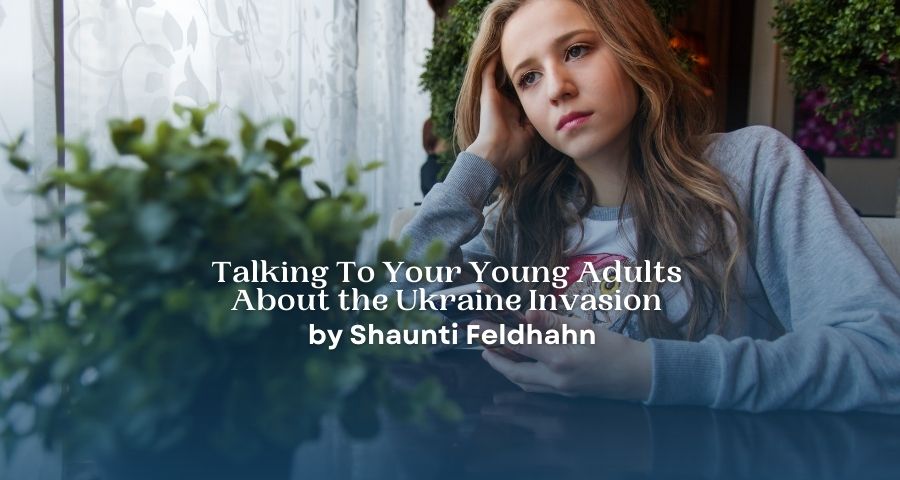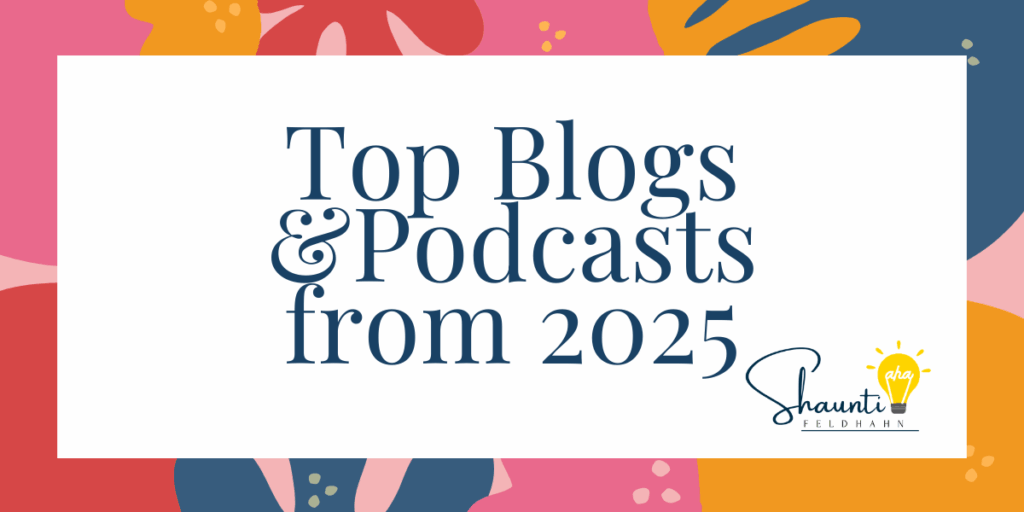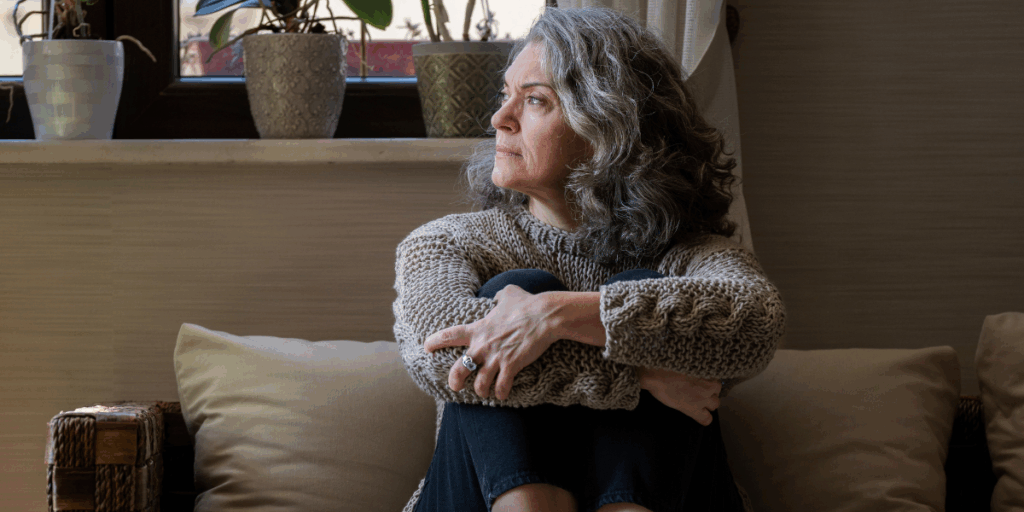Talking To Your Young Adults About the Ukraine Invasion
One week ago, on February 24, 2022, Russia’s President Putin declared war on Ukraine and began what was previously unthinkable: a full invasion and attempted takeover of a democratic European neighbor. In an article that day (which provides important context for this one), I noted this was the beginning of a great season of uncertainty and we need to be fervently praying for wisdom for our leaders and ourselves about how to respond well.
We also need wisdom about how to guide our kids through this. I’m especially thinking about our teens and college-age young adults. A generation of young people has never before had to process such a massive amount of real-time information and media input about a conflict of this potential magnitude. If it is difficult for us to process this, how must our kids feel? Especially since our young adults (maybe even some older Gen-Z readers of this blog) are coming to grips with a reality that has been merely vague and hypothetical for generations: A military action that could, without God’s grace, spark a much larger conflict . . . in a time when they and their close friends and siblings are draft age.
As I said last week, I’m far from an expert on foreign policy—but I’ve done a lot of studying of teenagers and young adults for books like For Parents Only. And I continue to investigate how they feel. Including interviewing them on this topic.
So here are just a few crucial things that we need to consider in order to help them process this intense situation—actions which may also help us process it along the way. Further, if you, yourself, are a young adult or twentysomething reader of this blog, these may be ways you can help your friends.
We need to help young adults, too, be “sober-minded and watchful” about what is unfolding
The words of 1 Peter 5:8 resonate even more today than a week ago. This last week, it has been hard to watch the images crossing our TV screens and social media feeds—and yet our kids have been doing so. They have been flooded with videos of the chaos. (More on that in a moment.)
The heroic resistance of the Ukrainian leaders and people has been heartbreaking and inspiring and has united the world against the tragedy being imposed by Putin. This is a good thing to discuss with our kids. Right now, an idea is shining brightly: the idea that might does not make right. That a bully cannot just take what he wants without consequences. That “all men are created equal” and have the right to freedom and self-determination. Use this as an opportunity to discuss and hear your kids’ hearts on those concepts.
Yet also use this as an opportunity to share that this is not a movie. The good guys don’t always win. Don’t take away your kids’ hope but help them be prepared emotionally for what might come. The successes of the Ukrainian resistance have made it more likely that a humiliated dictator’s next steps will be far more brutal. Until now, expecting that he would take over fairly easily, Putin likely wanted to keep much of the Ukrainian infrastructure intact. Now, analysts believe he may revert to “burn it to the ground” mode, as he did in Grozny, the capital of Chechnya. Facing crippling sanctions and the near-universal condemnation of the international community, will he back off? Double down? Threaten nuclear retaliation if sanctions aren’t removed? It is impossible to know. All we do know is that it seems highly unlikely that the plucky underdog can prevent a truly determined effort to blow Ukrainian resistance away.
We need to respect and listen to their fears, to help them overcome those fears
On the morning the main invasion started, I got a call from my 21-year-old daughter. “It is hard to know what information to listen to,” she said. “Is this really a big deal?” Her voice shook slightly as we talked about the fact that God is in control—but yes, this is a pretty big deal.
There was a pause and I could hear that she was trying to fight back tears. “Does this mean there might be a draft?”
Suddenly, I realized what she was most worried about: Her brother is draft age. Her boyfriend, who she has been dating for more than a year, is draft age. The concept was real in a way it had never been before.
I shared many of the things I eventually put in the piece last week, but also emphasized that right now, although the United States is sending troops to NATO allies, we are not directly being drawn into armed conflict. And even if things were to go downhill, we have a wonderful, professional military—so there would be no immediate reason for a draft.
But that said . . . it is impossible to not respect her fears—and those of millions of other young men and women. They have never before been confronted with a situation where things could conceivably come to such a tipping point. For the past year, my 19-year-old son has carelessly left his Selective Service paperwork in the envelope it came in, in the back of a file box, expecting never to look at it again. How many of our young adults feel the weight of that registration more fully today? Or much more simply, how many have the much more empathetic worry of what will happen to the Ukrainian people they see on their social media feeds?
We must draw out those concerns of our kids; ask them how they feel. Help them process it in trust that God is in control—but also in a way that they do actually share what they are feeling and know that we are listening. Multiple studies, such as this one from the Journal of Personality and Social Psychology, have found that having a supportive conversation about a stressful situation—one that draws out the concerns instead of dismissing them—actually helps decrease distress. It is worth noting that the same dynamic applies not just to our kids, but to us!
Help them get good information—and combat disinformation
The main source of news for Gen Z is not CNN, Fox News or The New York Times: It’s TikTok. It is Instagram Reels and YouTube shorts. Remember: The Ukrainian men and women on the front lines are posting TikToks too. We may not be aware of it, but many of our kids are being flooded by videos of this conflict.
The news:
@dylanpage.ning Russia & Ukraine Part 1- Ongoing Series #fyp #russia #ukraine #nato #putin ♬ original sound – Dylan Page
The heart-wrenching:
@lukalp1 #fyp #ukraine #georgia #🇬🇪🇺🇦 ♬ original sound – Luka Lapiashvili
And the terrifying perspectives on the ground, such as this from Day 1:
@bennyvalentinen17 Ukraine bombing no joke! #fyp #news #action #war #ukraine #russia #shooting🙏🏻🙏🏻🙏🏻 ♬ original sound – bennyvalentineN17
I have heard multiple young adults say they have no idea how to process it all—or even know what is true and what is not. (As one young commenter put it, “History class in 2050 will be analyzing TikToks.”)
In a time like this, disinformation is a real concern—not just for us but for our kids. Most social media—especially TikTok—delivers more of what you watch so (for example) those who watch Russian disinformation will see more of it. Help your kids be discerning about what they watch and listen to, and how to tell if something is misinformation. (For example, “Well, that video from that one source says this is just a peacekeeping effort. But we’ve seen the civilian areas be bombed, right? So maybe we shouldn’t watch videos from that source again.”)
If you have a college student or young twentysomething, you may have never before thought to share with them how to log in to your family’s subscription to the Wall Street Journal, The Atlantic, or whatever news source you trust. They may welcome the ability to get good news from trusted sources.
And in turn—ask your kids what they are seeing. What is being delivered to their screens.
As my daughter put it, “There’s so much; we honestly don’t know how to respond. But when a parent asks their kid to send what the kids are watching, it makes them feel like they are listening. That they care about what they are seeing. Sharing TikTok videos is like my generation’s love language. So it will matter if you say, ‘Send me videos, I’m curious to see what the TikTok side of the news is.’”
Pray and Help
Finally, set aside time to pray with your kids, and look for ways to extend tangible help to Ukrainians in need. There are many Christian relief agencies sending humanitarian aid to Ukrainians who are besieged—and those who are now refugees. Perhaps your kids can help you research which agency to give to. And praying together is also crucial. We can pray for specifics—for example, that Putin would have a dramatic change of heart, and for the leaders of the nations to be given wisdom in their dealings with him. But we can also pray for peace in our own hearts; and model for our kids that we know God is still in control.
Shaunti Feldhahn is a social researcher and best-selling author on relationships. Back in the day she worked on Capitol Hill and earned a Master in Public Policy from Harvard University. See more at shaunti.com.








Is there a print option? I’d love to share this with my spouse in person.